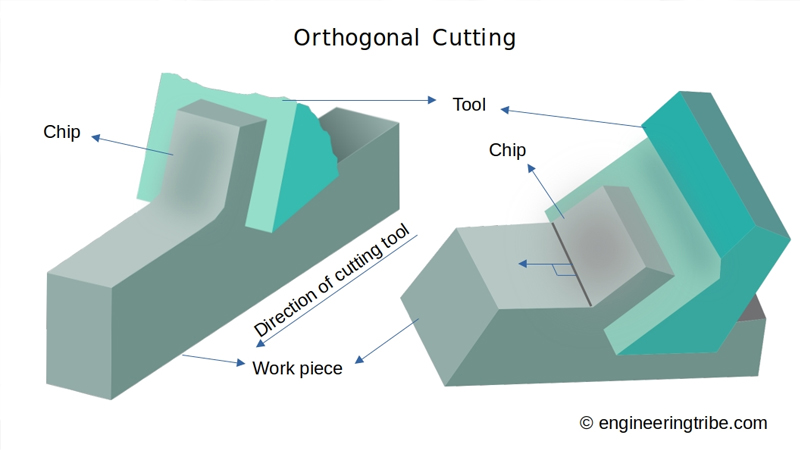
El corte de metales es "el proceso de eliminar material no deseado en forma de virutas, de un bloque de metal, utilizando una herramienta de corte".
Métodos de corte de metales:
Hay dos métodos básicos de corte de metal basados en el filo y la dirección del movimiento relativo entre la herramienta y el trabajo:
(i) Proceso de corte ortogonal
(ii) Proceso de corte oblicuo
(i) Proceso de corte ortogonal:
En el proceso de corte ortogonal, el borde de corte es perpendicular (90 grados) a la dirección de avance. La viruta fluye en una dirección normal al filo de la herramienta. Una herramienta perfectamente afilada cortará el metal en la superficie de la rejilla.
(ii) Proceso de corte oblicuo:
En el proceso de corte oblicuo, el borde de corte se inclina en un ángulo agudo (menos de 90 grados) en la dirección de avance. El chip fluye hacia los lados en un rizo largo. La viruta fluye en una dirección en un ángulo con la normal al filo de la herramienta.
La diferencia entre los dos se analiza en detalle en la siguiente tabla:
Metal cutting is “the process of removing unwanted material in the form of chips, from a block of metal, using cutting tool”.
Methods of Metal Cutting:
There are two basic methods of metal cutting based on cutting edge and direction of relative motion between tool and work:
(i) Orthogonal cutting process
(ii) Oblique cutting process
(i) Orthogonal Cutting Process:
In orthogonal cutting process, the cutting edge is perpendicular (90 degree) to the direction of feed. The chip flows in a direction normal to cutting edge of the tool. A perfectly sharp tool will cut the metal on rack surface.
(ii) Oblique Cutting Process:
In oblique cutting process, the cutting edge is inclined at an acute angle (less than 90 degree) to the direction of feed. The chip flows sideway in a long curl. The chip flows in a direction at an angle with normal to the cutting edge of the tool.
Difference between the two is discussed in detail in the table below:

- Log in to post comments